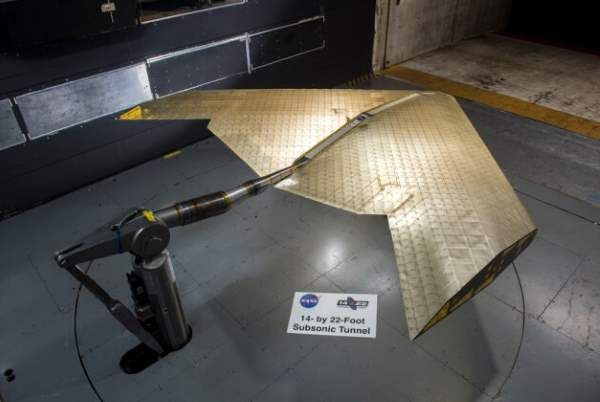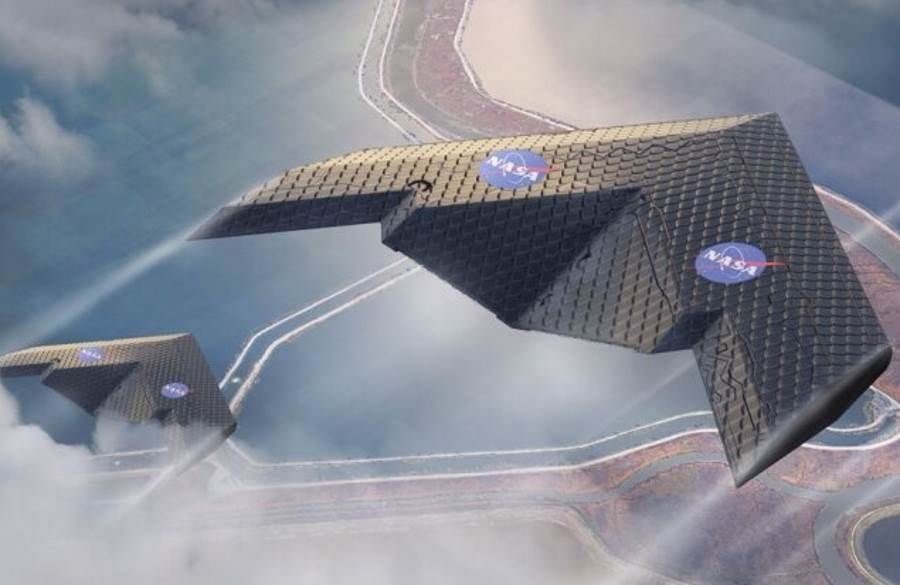MIT and NASA demonstrate the aircraft of the future. A wing that changes shape
A team of engineers from the Massachusetts Institute of Technology and NASA has built and successfully tested a wing that can change shape to adapt to aerodynamic conditions. The structure is made up of hundreds of tiny, identical components, and its developers assure that their concept allows the construction of lighter, more efficient and energy-efficient aircraft.
The new design by scientists from the Massachusetts Institute of Technology (MIT) and NASA looks like a flying wing, a tailless structural system where space for the crew, cargo, fuel and other equipment is inside the head of theow different design. The best-known craft of this type is the B2 Spirit bomber.
However, in the odrounlike traditional designs, the new design has no moving control surfaces, such as ailerons. The new assembly system allows deformation of all or part of the wing by using a mix of rigid and flexible componentsoin its structure. Such a solution ensures greater efficiency at every stage of flight.
Tiny components bolted together to form a lightweight lattice frame are then coated with a thin layer of polymer material. As a result, a wing composed of thousands of tiny trojangleow is actually hollow inside, which means it is much lighter and therefore also more energy efficient than conventional structures made of metal or materialoin composite. This, of course, translates into lower fuel consumption.
The new wing design was tested in NASA’s wind tunnel, and the results of these testow were described in the pages of the magazine „Smart Materials and Structures”.
Each phase of flight – takeoff, landing, the flight itself or maneuvering – ma swoj its own slightly different set of optimal parametersoin the wing. In other words, the roThe different phases of flight need a roThe different designs of the wing. A conventional wing is a necessary compromise and is not optimized for any phase of flight, so performance is sacrificed. The wing, whichore is constantly deformable, can provide the best configuration for each stage of flight.
Although it was possible to develop a mechanism to control the deformation of the wing, the combinedoł went one step further and designed a system, ktory automatically responds to changes in aerodynamic conditions and adjusts the shape itself. It is something like a self-adjusting, passive sash reconfiguration process.

Wind tunnel tests. Photo. Kenny Cheung/ NASA Ames Research Center
– We are able to increase the yield by matching the shape to the loads occurring during the flight under roThe machine’s angle of attack – said Nicholas Cramer of NASA, head of theow author of the publication. – We are able to produce exactly the same behavior, ktore can be done actively, but we did it passively – added. The wing or parts of it bend in a certain wayob in response to certain types of stresses.
Although the version tested in the wind tunnel was hand-assembled, the entire manufacturing process is designed to be easily done by a swarm of small, simple autonomous robotsoin assembly. The design and testing of the robotic assembly system is a separate topic and will be discussedofeatured in a subsequent publication, whichora has wkrotce to appear.
The same system can be used to create other structures. – We can create any geometry. The fact that most of the aircraftow has the same shape – it’s essentially a tube with wings – according to costow. It is not always the most effective shape. But huge investments in production facilities, instrumentation and manufacturing processes make it easier to stay with long-held configurations – explained Benjamin Jenett of MIT, coopublication rover.

